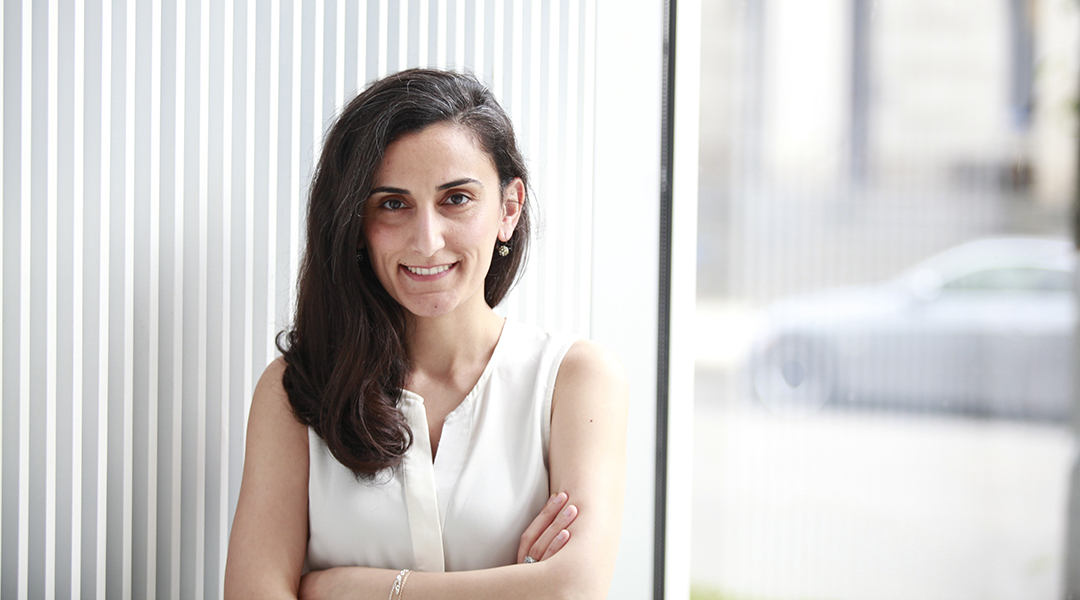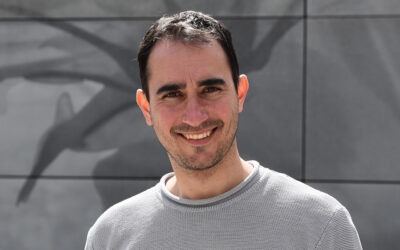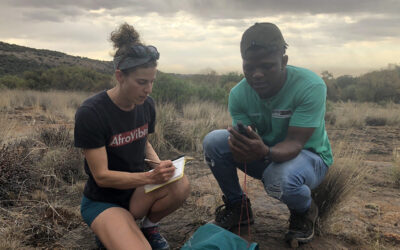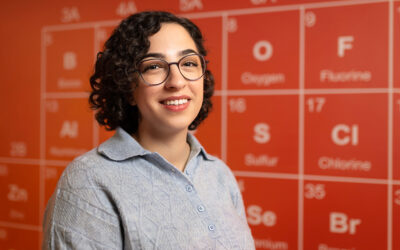Image credit: David Sadat
Canan Dağdeviren is certainly one of the most inspiring people you will ever meet. Born and raised in the Asian part of Istanbul, Turkey, she was introduced to science at an early age, which sparked a lifelong passion.
As a principal investigator at the Massachusetts Institute of Technology (MIT) Media Lab, Dağdeviren strives to “decode” different physical patterns, such as heartbeats or changes in body temperature, that define a functioning human body. In order to do that, her laboratory builds devices worn on clothing or directly applied to the target organ. These devices can be used to immediately inform the individual about a concerning biological change, which might indicate ailment or disease, and even intervene by administering medications for instant, personalized treatment.
Besides her impressive research career, Dağdeviren is also a fierce advocate for women in science and imagines a world where science is accessible for everyone. She has therefore fused this ambition with her love for art, curating an art exhibition called the “Bees of Science” together with her students to showcase the work from her courses and lab, and has created a transparent cleanroom named the “YellowBox”, which allows 24/7 visual access for those interested — you can even sneak a peak online through her group’s YouTube channel.
When did you decide to become a scientist? Was there a specific event that triggered this decision?
I think I was always into science, but I did not know what it was when I was a child. There is a story my parents told me, that when I was five years old, I was playing with rocks and trying to smash them so I could find the atoms inside. My parents were not scientists, but my father was very supportive. He told me that I could not see the atoms with the naked eye, we needed atomic microscopes. He introduced me to microscopy through his friend who worked at a university.
Then my father gifted me a book about Marie Curie when I was 7, hoping I would be inspired by her. When I read the book, I also learned about Marie Curie’s husband, Pierre Curie. He was an amazing scientist who established a lab with his own funding and worked with his brother to discover something magical: piezoelectricity.
Whenever you press certain materials together, they produce current and voltage, and when you apply voltage to these materials, they change their shape. I was so interested in this subject and I wanted to learn about the underlying mechanisms of the physics of these materials, but I was too young.
l had learned that my grandfather passed away when he was 28 because of heart failure and I never got to meet him. Hearing this story made my research adventure more personal, and I really wanted to do something for heart patients.
Then something amazing happened. My mom is an avid reader and so took my two brothers and I to a book exhibition where I met an amazing theoretical physicist, Erdal İnönü. He is famous because he is the son of İsmet İnönü, the second president of Turkey. He launched three books about his scientific adventures and we bought 3 copies, one for each of my siblings and myself. He loved talking with children — he saw us in a crowd of adults and asked us to come over, and we had a conversation, and he signed the books.
He then asked me what I wanted to do in the future, and I told him I was very much into piezoelectricity and that I wanted to do something for heart patients, but that those were in polar opposite directions of scientific fields, and I didn’t know what to do. He said I should read the book he just signed and when I finished, I would be able to answer that question.
I read the book and I realized I really needed to study physics. The problem was that no one except my mother supported me. Everyone told me physics was too difficult for a girl and I may not find a job after studying it. But my mother encouraged me [and told me] that I could do it because my name starts with “C-A-N” and I CAN do it. With that logic as a child, I really thought this was possible. So, I studied physics, and eventually, I got a job offer from MIT.
You are currently a principal investigator at the MIT Media Lab. What is the lab’s research focus?
Media Lab is a very special department at MIT. We have various types of professor, engineers, medical doctors, activists, musicians, and more, and we all get together and collaborate instead of compete. This is the beauty of the lab, and this is why I am here as opposed to a traditional department.
I do different types of things to communicate my science. I do art exhibitions and experiments and I create short movies so people can see the adventures of our scientific process. In my research group, we merge engineering with science, art and design, and we develop projects by exploring novel materials and devise structures, such as mechanically adaptive electronic systems, to understand the human body in a collective manner. That last part is important because we would love to target every part of the human body together.
For example, if my heart doesn’t beat well, what is the implication for my skin or my brain? If I have Parkinson’s, when I take the drug orally, what happens to my brain’s neural activity while I am trying to walk? We are trying to check all these things at the same time and collect different types of datasets, like temperature, respiration, and humidity. We want to bring all this information together to create personalized medicine.
Today’s medicine is “pajama-type.” You can wear your partner’s pajamas and you can wear your mother’s pajamas. It doesn’t need to fit you perfectly, you can still wear it. If two different women have breast cancer, they receive the same medication regardless of who they are. We would like to develop “suit-type” medicine. It will fit you, be the right size, and these devices will have intimate integration with your body and extract all the necessary information.
Right now, another dimension of our work, because the pandemic prevented us from going to the lab for a while, is spending time on how we can collect big data and how we can use it along with artificial intelligence and machine learning to estimate what will happen to my body when I am under stress later.
When did you get involved there? What do you like about working there?
Media Lab is a surprising place. There is a flavor or spice you may not find in any other location in the world. When you go into the lab, at any moment something surprising can happen.
When we do research there, we don’t only focus on the research, we also focus on the outcome of the research. For instance, if I create a device, will it be accepted by the user? Should I make it beautiful or colorful so that children can also enjoy wearing it? Should I make it as thin as possible, so that if I put these devices on an elderly patient the device sits on the skin comfortably.
I did not know much about the Media Lab until I organized a workshop at MIT. After my graduation from the University of Illinois, I joined MIT Koch Institute for Integrative Cancer Research and was privileged to work with Bob Langer. He is the most cited engineer in history, and an amazing human being.
So, during my Ph.D. and postdoc, I cited amazing researchers in my papers, but I wanted to get to know them and their research better and so, I organized a workshop. Many amazing researchers came and I had the opportunity to present my work. One of the faculty members of the Media Lab was in the audience and he told me afterwards that I should give a comprehensive talk at the Media Lab so they could learn more about what I do as well.
I gave that talk a month later, but I had no idea it was basically a job interview. I was telling jokes and being too relaxed and explaining things in a very light and funny way. Right after the talk, someone suggested I join the Media Lab as a new faculty member. I told them that was an amazing opportunity, but I had so little information about the lab. I really didn’t know who they were.
When I was at MIT, I was nominated by my Ph.D. advisor, John Rogers, for the Harvard Society of Fellows. This is a very prestigious fellowship given to only 12 young scholars each year. They call it the “club for genius people.” You just go to the dinner with amazing food, wine, and chocolate, and you get to meet people like Steven Hawking or the president of some country or an amazing historian. I was the first scientist selected from Turkey in the society’s history. It was an amazing personal success and an opportunity to represent my country.
Six months after I joined the society, I got my job offer from MIT. It was so hard to decline the fellowship, so I negotiated with Harvard and MIT and I got an amazing start up package of 5 to 6 million dollars to make my dream lab, which I would later call the YellowBox. I quit my job at Harvard and joined the MIT Media Lab in 2017.
Can you tell us more about your research? Specifically, what are “Conformable Decoders”?
Usually, in a traditional department, they name the group with your first and last name. In the Media lab, we use two words to describe what we do as the name of the group. If you check the initials of my group, CD, it is the same initials as my first and last name. So, the name of my group is “Conformable Decoders”.
We believe that we live in an ocean of physical patterns like heartbeats, respiration, temperature changes, and so forth, and they all mean something. It’s a biological language and we need to convert it into an electrical language.
We decode these patterns with devices that are conformable so that they can be stretchable and flexible to fit any curvilinear parts of human body. We call our devices “decoders”.
We [also] use implantable devices, and devices for textile incorporation so that, if you don’t want to stick these devices on your skin, you can wear them as part of your clothing, for example, as a piece of bra, underwear, T-shirt, or trousers. These are mechanically adaptive electromechanical systems in the forms of sensors, actuators, transducers, and mechanical energy harvesters — all used to understand the human body.
When you say “you look pale today,” that is a kind of a decoding, albeit subjective. We need to create interfaces for users and doctors to objectively assess what’s happening in your body.
For example, every woman, unfortunately, is at risk for breast cancer. When you go to the doctor, maybe the sensation of the doctor’s exam is not sensitive enough to detect cancer. A more accurate test would be through ultrasonography, mammography, or an MRI because “decoding” [cancer in breast tissue] through these medical instruments is more accurate. The point is to understand what is happening to better diagnose disease.
Every human being is different. How challenging is it to define a “one-size-fits-all” standard physical pattern for diagnosis/treatment or do your decoders have to be adjustable to every single individual?
We are very aware of this problem. We have to understand our target locations in the human body in order to fabricate and design our devices. For instance, we have developed a way to calibrate our conformable Facial Code Extrapolation Sensor (cFaCES) device for ALS patients by first studying the scheme of the facial skin and creating the strain map. From this strain map, we see if this device is mechanically and electrically safe and we design it accordingly. It takes less than 10 seconds to do a calibration for any person.
Our main goal with these devices is making them comfortable, because then you will wear them for a long period of time and you will gather a lot of information, a lot of big data. If you have big data, through machine learning you can do an estimate of what will happen to your body.
You mentioned that meeting Stephen Hawking in 2016 inspired you to develop this facial decoder for ALS patients. Can you tell us about this and how does your device work?
Stephen Hawking was an invited guest at one of our Harvard Society dinners when he was at Cambridge. He was very charming and warm. The first thing I told him was that I’m from Turkey and I used to read his books when I was a kid, and it was so great to meet him. I never gave him room to respond and then at the end the conversation, he just said, “Nice.”
After dinner, I told him that with his current system, it takes forever for him to form sentences, and I think we could make a better version. We could make flexible devices to attach to your skin and decode the strain on your face and make you to speak in a faster fashion. I asked him if he was interested and he simply said, “OK”.
I was really impressed that he came all the way from the UK to the US to raise money for research initiatives. I was so touched and I thought, if he can do this amount of work at that age and if I have all the resources, students, and inspiration and ideas, why shouldn’t I make this device?
The decoder we have created, cFaCES, is a tattoo-like device that you can laminate to your cheek to decode the strain variations on your face while you are making gestures, like smiling. This is especially important for people who may have speech disorders or lack the ability to communicate, such as individuals with ALS, like Stephen Hawking. This technology can [associate the device’s movement] using machine learning and language classifications to create thousands of messages within seconds, like “I love you” and “I want to go to the bathroom”, through this tiny device which costs less than $10.00.
Unfortunately, Stephen Hawking passed away before the device was completed but I recruited some amazing ALS friends (equal number of female and male subjects to emphasize on gender equality highlighted in our group’s diversity statement) to use the technology and I acknowledged Stephen Hawking in our publication. We also created a movie about the device, and that was the first short movie I ever directed.
Which physical pattern of the human body do you want to decode next?
I would like to focus on the female body. Currently, there is no efficient way to understand the health of the ovarian system, breast cancer or neuronal activity of women.
I am actually very interested in ovarian cancer, and I am working to create some systems to increase female contribution in clinical research. We are doing a lot of individual trials on human subjects and it’s very easy to find male subjects. Finding female subjects is more complicated — there are various private reasons for this.
If it is an obstacle for women to contribute in clinical research and clinical trials, how can the technologies we develop be beneficial to them? If we don’t have feedback for these technologies, the devices will not be comfortable, or it will not get enough data from the female body. This is another reason that I really want to focus on female technology and further increase the number of female participants and diversity in clinical trials.
You created the “YellowBox” at MIT Media Lab. How is it related to transparency in science and why is this important to you?
Transparency is very dear to me. In college, I [gained] great theoretical knowledge, but not perfectly practical knowledge. I did not know how to conduct an experiment and I was one of the few female students in my Ph.D. group. I went to the lab, took a chair, sat on it and observed everyone. For three years none of my projects worked, but my advisor and my parents were extremely supportive. Then after three years, everything started working and I created my own experiments and worked with young students and published papers.
I promised myself in the future, if I had a chance to build my own lab, I would build something that is [literally] transparent so that everyone could see what we do in a cleanroom without needing training or getting permission. Usually, cleanrooms are like solid blocks and nobody can see what you do inside. I had to argue with the architects and workers to make my lab transparent. I told them that I wanted people to sit in the corner and watch what we do. They accepted the plan but they also said it would take one and a half years to build. I said, “No, I cannot wait that long. Please just make it nine months.” I wanted this to be my first baby. To encourage them to speed up the work, I worked on the lab design side by side with them, cooked Turkish food for them and brought them gifts.
The building is physically transparent and our lab is also intellectually transparent, with our YouTube channel, for example. You can see the processes we do inside the cleanroom from anywhere in the world. I believe we are so privileged to be at MIT and we have to share this privilege with people who might lack it. This is how the universe is going to improve and how technology is going to go to the next level.
In 2019, you created an impressive exhibition called “The Bees of Science”. Could you explain what it is and what the inspiration for this unique art-meets-science project was?
As a part of my early teaching in the Media Lab, I offered my students the opportunity to create an exhibition that became the first junior faculty exhibition in the history of the Media Lab’s main lobby. We created seven honeycombs with a special film that, if you look at it from one angle, you see the inspiration for that research and from the other angle you see a part of the device. For instance, one of my students was inspired by his grandfather who had Parkinson’s disease and he developed a device for Parkinson’s patients. One of my students was missing their grandma, who had passed away, and she created a skin that felt like her.
I created a metaphor: My students are like bees that come from different flowers. Together they create something magical called honey. The taste of honey can be preserved up to one hundred years. By using this metaphor, I said my students are coming from different regions of the world and from different countries, cultures, and backgrounds, and they get together and create their science with high integrity and longevity. We put the entire exhibition on a white wall so that everyone could read it and understand why and how we do the science transparently. It got great exposure and everyone loved it.
Are you planning to do something similar again soon?
There will definitely be another one soon, but not only from my group. It will be from various groups from the Media Lab and hopefully you will see that in the coming weeks.
What would be your advice for aspiring bioengineers?
I would say to have courage, do what you want to do, and follow your dream because life is too short to follow someone else’s. Another thing I would suggest is to just ask questions.
I would also say to have conversations with different types of people outside your field like artists, designers, lawyers, or architects because they will inspire your research in a unique way.
What is …
Your favorite travel destination?
Istanbul
Your favorite food?
Homemade French fries with crushed red pepper
Your favorite book?
Rosalind Franklin: The Dark Lady of DNA by Brenda Maddox
Your favorite artist and/or song?
Imagine by John Lennon. I danced with my husband to that song at our wedding.
Your favorite movie?
Oh, I have so many favorite movies! I like biographical movies, especially “The Imitation Game” and “The Theory of Everything”.
A discovery (any research field or time) you wish you would have made?
Yes, the discovery of piezoelectricity for sure.
A person (famous or not) you would like to have coffee with?
Atatürk, the founder of Turkey. He gave amazing rights to women, [i.e., voting rights] and was very much into science. Mostly because of him, I am here.
Who would play you in a biopic?
Emma Watson, she is a fantastic advocate for women’s rights and I’d be honored.

















